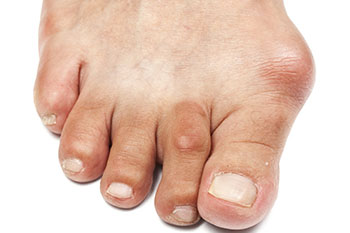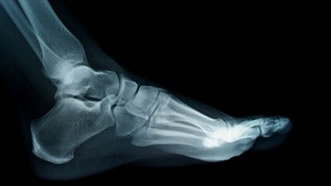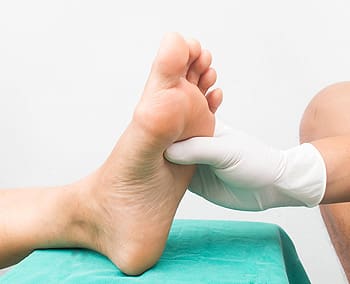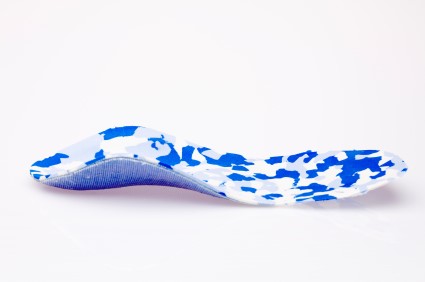
Podiatrist Stephan J. LaPointe, DPM, PhD, FACFAS of Georgia Foot & Ankle Specialists is dedicated to providing the highest quality foot and ankle care. With one office conveniently located in Rome, Georgia, Dr. LaPointe is the only podiatrist in the area board certified in both Forefoot and Rearfoot and Reconstructive Rearfoot and Ankle Surgery. He is the only podiatrist in the country with three years of surgical training and a Ph.D. in Biomedical Engineering. His thesis and focus was on lateral ankle instability and how to surgically repair it. Dr. LaPointe is a faculty member of the Podiatry Institute and is constantly lecturing on his work and research.
Dr. LaPointe provides treatment for a variety of podiatric conditions, such as heel pain and fungal nails, and offers sports medicine and surgical procedures. Georgia Foot & Ankle Specialists accepts most insurance plans and welcomes new patients! We are following the recommended guidelines of the CDC and are requiring that masks are worn when entering the office.
To schedule an appointment, call our office today! (706) 232-3888

A bunion is a bony, painful swelling that is often formed on the first joint of the big toe. Bunions can be extremely painful due to the weight of all your body resting on it each time you take a step. Everyday activities, such as walking and wearing shoes, can cause you extreme discomfort if you have a bunion.
Reasons that a person may develop a bunion can vary. Some patients may form bunions due to genetic factors, complications with arthritis, or a weak foot structure. General aging can also play a role in the formation of a bunion.
If you have a bunion, you may notice a bony bump on your big toe, experience swelling and redness, and the area may feel tender to the touch. To help alleviate the pain that often comes with having a bunion, it’s suggested to maintain a healthy weight to help lessen the pressure on your toe, practice both heating and icing the affected area, wear wide-fitting shoes wear to leave plenty of space for your toes and to minimize rubbing, and look into shoe inserts that can help position your foot correctly.
Because bunions can result in other painful foot problems, such as hammertoes and bursitis, we recommend that you meet with a podiatrist for a professional diagnosis and for information regarding all your treatment options.
 Highly active people (athletes in particular), or those with a very sedentary lifestyle, are very prone to stress fractures. When muscles weaken—either from too much or too little use—the muscles cease providing cushion for the foot and ankle as they impact the ground. As there is very little to protect the bones in your feet, each step you take causes the bones to absorb the full impact, and this causes cracks to form, or stress fractures, to form in the pressurized bones.
Highly active people (athletes in particular), or those with a very sedentary lifestyle, are very prone to stress fractures. When muscles weaken—either from too much or too little use—the muscles cease providing cushion for the foot and ankle as they impact the ground. As there is very little to protect the bones in your feet, each step you take causes the bones to absorb the full impact, and this causes cracks to form, or stress fractures, to form in the pressurized bones.
Basketball, tennis, and gymnastics are three of the top activities in which stress fractures appear consistently and frequently. On the other side however, those people who have previously lived an inactive lifestyle may incur a fracture when transitioning abruptly to an active lifestyle—such as those starting a high-impact, intensive workout. The muscles, unused to such vigorous work, are not used to handling and cushioning against a vigorous activity. Also, those patients who suffer from osteoporosis, or any condition in which their bones are weakened, frequently suffer stress fractures simply from normal wear and tear.
At the localized site of the fracture (typically where the symptoms originate) the pain can be immense. Sharp or dull pain is paired with swelling and possibly tenderness—engaging in any kind of further activity, especially high-impact, is highly discouraged. Though stress fractures heal in time, they are not as serious as say, when you receive one and continue engaging in high-impact activity; the condition may turn into a full fracture. A full fracture is very serious and may prevent usage of the foot wholesale.
From this point, treatment can vary patient to patient with the severity of the fracture. Rest is absolutely required for the foot. Fractures vary in healing time, some can be healed with short bursts of rest, and others require prolonged periods of resting paired with crutches. In cases in which the fracture is very serious, surgery may be authorized to install pins supporting the fracture and aiding in healing.
On diagnosis of a stress fracture—immediately cease the activity that caused the fracture and rest! Prevention is always your first step, however, if relief of the symptoms does not occur naturally and within a reasonable time frame, an orthopedic specialist is highly recommended.
 Millions of people are affected with diabetes each year. Diabetes damages blood vessels in all parts of the body, especially the feet. The legs and feet may develop slow blood flow, which causes neuropathy (nerve damage). Once a diabetic patient develops neuropathy, it is important that the feet are well taken care of, or else the lower limbs may have to be amputated. This only happens in drastic cases, but it shows how seriously diabetic foot care should be taken.
Millions of people are affected with diabetes each year. Diabetes damages blood vessels in all parts of the body, especially the feet. The legs and feet may develop slow blood flow, which causes neuropathy (nerve damage). Once a diabetic patient develops neuropathy, it is important that the feet are well taken care of, or else the lower limbs may have to be amputated. This only happens in drastic cases, but it shows how seriously diabetic foot care should be taken.
It is very important to always wash and dry the feet thoroughly, especially in between the toes, when diabetic. Secondly, examining your feet and toes for redness or sores must be done, even if you do not feel pain. You may also want to examine your feet from the bottom. Try to avoid wearing colored socks to prevent infections that may occur from the die. Additionally, well-fitting socks are highly recommended.
A diabetic’s physician should always monitor their Hemoglobin A1C levels to test how well the blood sugars are being controlled during the past 3 months. It is very important to keep blood sugar levels at normal range, 70-110mg/dl. In addition to giving advice about everyday eating habits and foot care, a physician may prescribe medicine to help with neuropathy of a diabetic patient. It is also advised to see a podiatrist if experiencing any feet conditions. Toe nails may also need to be taken care of by a podiatrist, since some patients may cut too deep around the cuticles, causing infection.
A person can take care of their feet at home by following the instructions of their physician. Using creams on one’s feet is also an effective way to heal dryness. When using tools to remove calluses, use caution, as severe diabetics may not be able to feel pain on their feet. If any complications arise do not hesitate to call a podiatrist.
On a daily basis, diabetic feet must be checked. If you are ever concerned about something, contact your health care professional. You never want to wait until a wound gets too bad to treat. If left untreated, gangrene may develop. Gangrene is a serious infection that can cause in diabetics that can lead to sepsis or amputation. It is also important for diabetics to be on the lookout for ulcers. Ulcers are sores that develop from tissue loss on the skin. They can be quite painful and require intensive treatment. Early treatment and everyday inspection are imperative to staying healthy.
 Orthotics are shoe inserts that are meant to correct an irregular walking gait or provide cushioning to the feet. Orthotics come in a variety of different models and sizes, including over-the-counter and customizable variants. Customizable orthotics can be shaped and contoured to fit inside a specific shoe and are typically prescribed through a podiatrist who specializes in customized footwear and orthotics design and management.
Orthotics are shoe inserts that are meant to correct an irregular walking gait or provide cushioning to the feet. Orthotics come in a variety of different models and sizes, including over-the-counter and customizable variants. Customizable orthotics can be shaped and contoured to fit inside a specific shoe and are typically prescribed through a podiatrist who specializes in customized footwear and orthotics design and management.
Orthotics are beneficial because they can help prevent injuries from occurring and provide cushioning to keep pain levels down to a minimum. They also allow for the correct positioning of the feet. Orthotics can act as shock absorbers to help remove pressure from the foot and ankle. Therefore, orthotics can make bodily movements, such as walking and running, become more comfortable as well as help prevent the development of certain foot conditions.
Orthotics alleviate pain and make the foot more comfortable by slightly altering the angle at which the foot strikes the ground surface, therefore controlling the movement of the foot and ankle. Orthotics come in different variants and can be made of various materials. To determine what type of orthotic is most suited to your feet and your needs, it is best to consult your podiatrist. He or she will be able to recommend a type of orthotic that can help improve your foot function or prescribe a custom orthotic to best fit your feet.